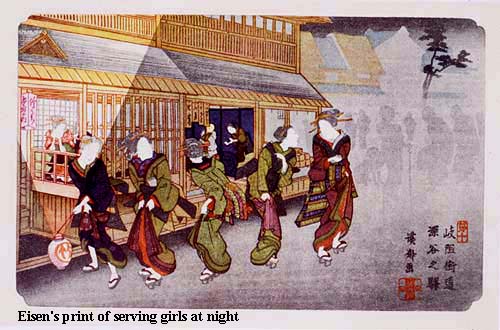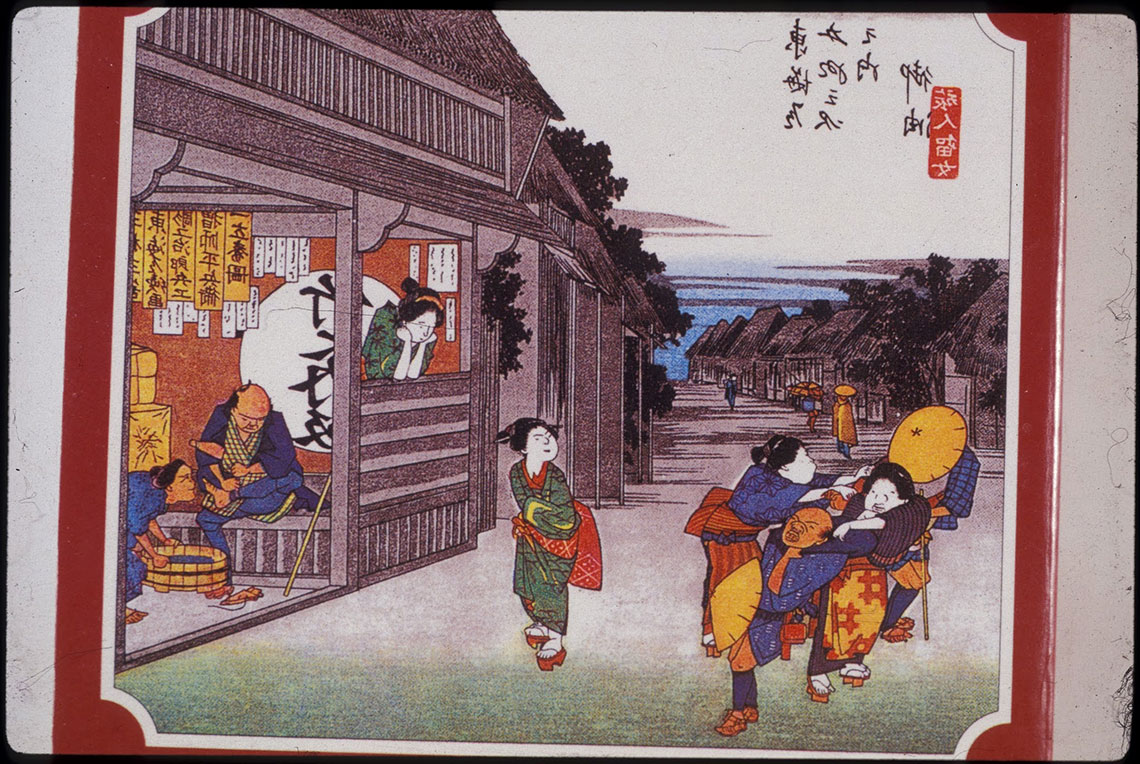Approaching Fukaya, the modern highway turns and bypasses the old post-town. Staying on the old Nakasendo, the main features of a post-town remain. The entrance where the kosatsuba once stood still retains the dog-leg shape of a masugata. Moving through the town, many shops on either side of the old road continue their trade in the Edo period tradition. The craftsman, sitting on tatami mats, displays his skill and his wares at the front of the shop. A dark passageway behind him leads the customer to a storeroom where purchases can be discussed over a cup of tea. The town still boasts many craftsmen who specialize in just everyday necessities and odds and ends. Also, unusually, there are at least three traditional sake brewers.

The scene now is docile and filled with tradition, but Fukaya had a wild reputation in the Edo period. Women outnumbered men by a ratio of 115 women to 100 men. The town boasted 80 inns, more than any other post-town on the eastern end of the Nakasendo. Competition between the inns was fierce to the point that “dancing girls” would drag potential customers from the street to secure trade. Many a Japanese story describes the hazardous nature of travel through such post-towns as night fell.
Passing the joyato on the other side of Fukaya, the modern highway is crossed by footbridge to join the highway which is lined withnamiki. Here the “namiki” are ginkgo trees which are better suited to the soils of the Kanto plain than pine trees which are common along most of the rest of the Nakasendo. The road crosses and re-crosses the modern highway, passing through quiet rural scenes for seven miles. As Kumagaya is reached, the modern road is rejoined for a while before the old Nakasendo branches off into an older section of town. Here, the bustle of a market town still echoes along the narrow street until a modern, high-rise department store bars the way. Uniformed girls bow customers into the store, past glass and stainless steel doors. The old “highway” continues on a marbled passageway between perfume counters, silk scarves, umbrellas and flower stalls. This was the Nakasendo.


